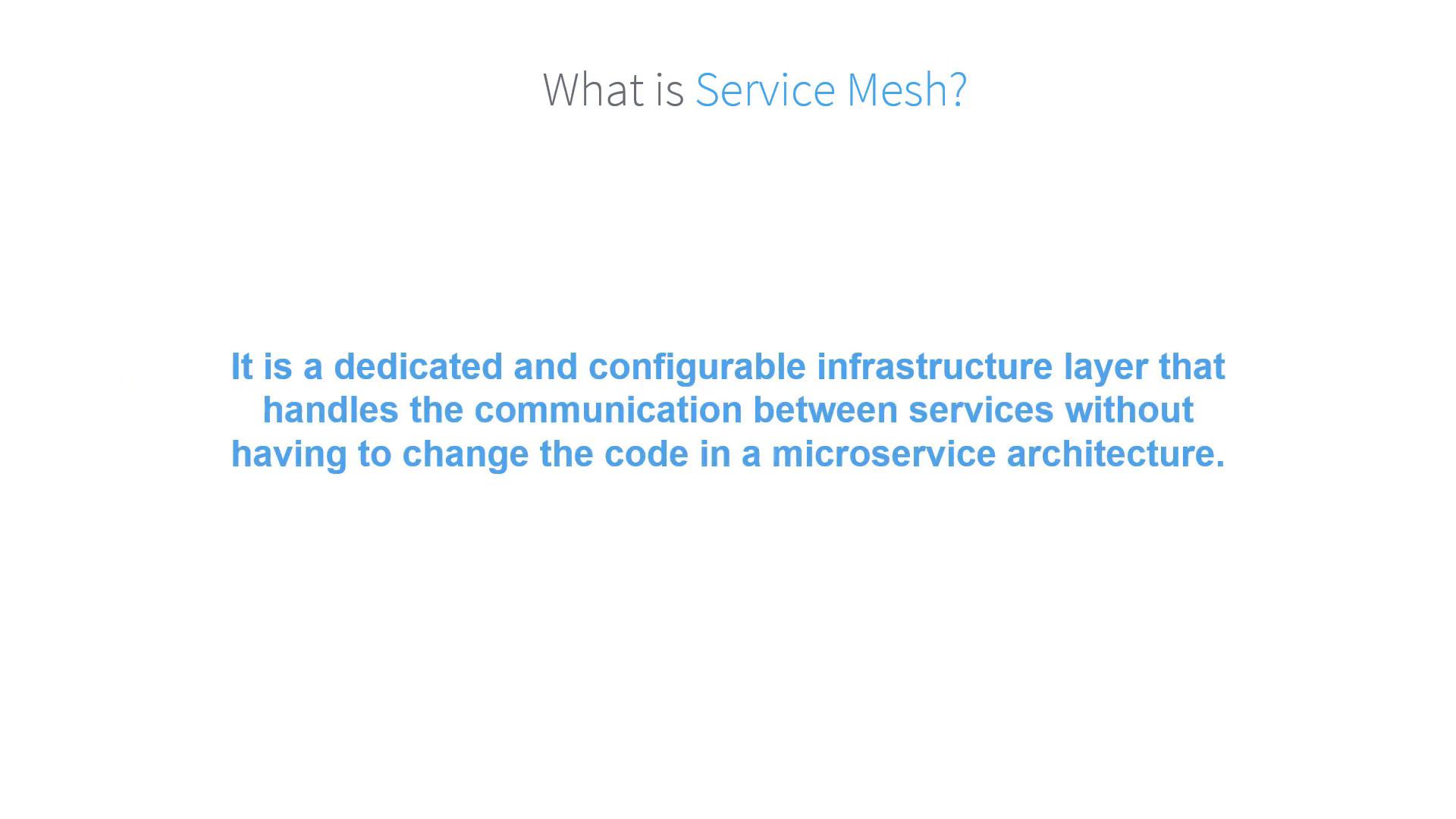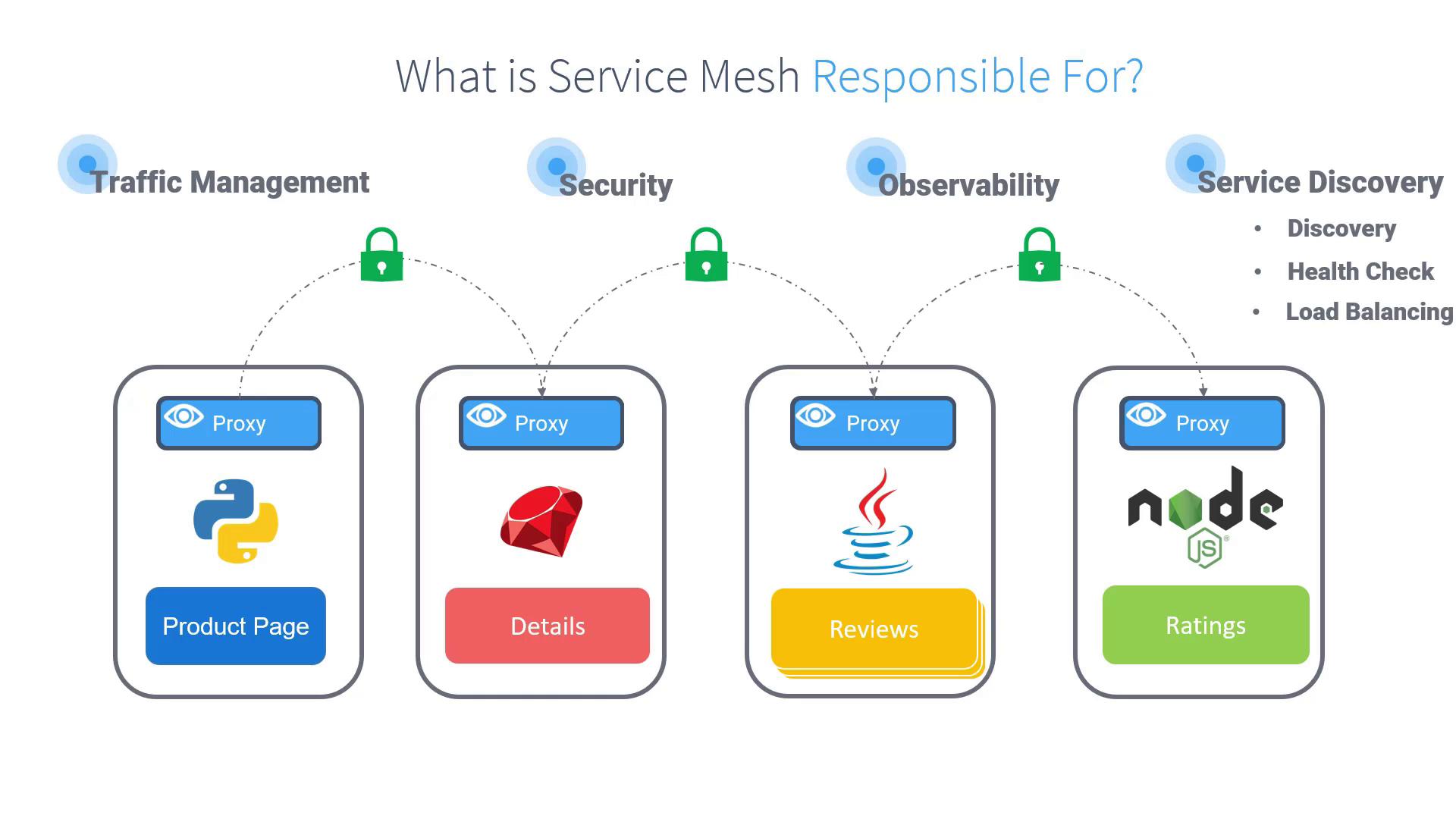Kubernetes and Cloud Native Security Associate (KCSA)
Platform Security
Service Mesh
A service mesh is a dedicated infrastructure layer that handles service-to-service communication in microservices architectures. By offloading networking logic to this layer, developers can focus on business functionality without modifying application code for resilience, security, or observability.
Architecture Overview
Rather than embedding networking concerns within each microservice, a service mesh injects a sidecar proxy alongside every service instance. These proxies form the data plane, managing all east–west traffic. A control plane centrally configures and orchestrates the proxies, enabling dynamic routing, security policies, and telemetry collection.

Key benefits include:
- Dynamic Traffic Routing: Canary releases, blue/green deployments, circuit breaking, retries
- Mutual TLS (mTLS): Automatic encryption and authentication of service calls
- Observability: End-to-end metrics, logs, and distributed tracing
- Service Discovery: Automatic registration and lookup of service instances
Note
A service mesh is platform-agnostic—popular implementations include Istio, Linkerd, and Consul Connect.
Core Responsibilities
The following table summarizes a service mesh’s primary capabilities:
| Capability | Description | Example Tools/Config |
|---|---|---|
| Service Discovery | Maintains registry of healthy instances for dynamic lookup | Envoy, Consul Catalog |
| Health Checking | Removes unresponsive instances to prevent routing to unhealthy pods | HTTP/gRPC probes, custom health checks |
| Load Balancing | Distributes traffic based on round-robin, least connections, or locality | Envoy LB algorithms |
| Security (mTLS) | Encrypts and authenticates all inter-service traffic | Istio PeerAuthentication, Linkerd identity service |
| Traffic Management | Applies retries, timeouts, fault injection, and traffic splitting policies | Istio VirtualService, Linkerd ServiceProfile |
| Observability | Collects metrics, logs, and traces for end-to-end visibility | Prometheus, Jaeger, Grafana |

- Service Discovery
Proxies query a centralized registry to resolve healthy service endpoints dynamically. - Health Checks
Continuous probing ensures unresponsive instances are excluded from load-balancing pools. - Load Balancing
Traffic is distributed using configurable algorithms (e.g., round-robin, least requests). - Security (mTLS)
Automatic certificate issuance and rotation secure all traffic with mutual TLS. - Traffic Management
Fine-grained policies for fault tolerance: retries, timeouts, circuit breakers, and canary releases. - Observability
Telemetry from each proxy yields metrics, logs, and distributed traces, aiding root-cause analysis.
Next Steps and References
In the upcoming sections, we'll explore how to configure each capability with code examples, best practices for policy design, and real-world use cases.
Links and References
Watch Video
Watch video content